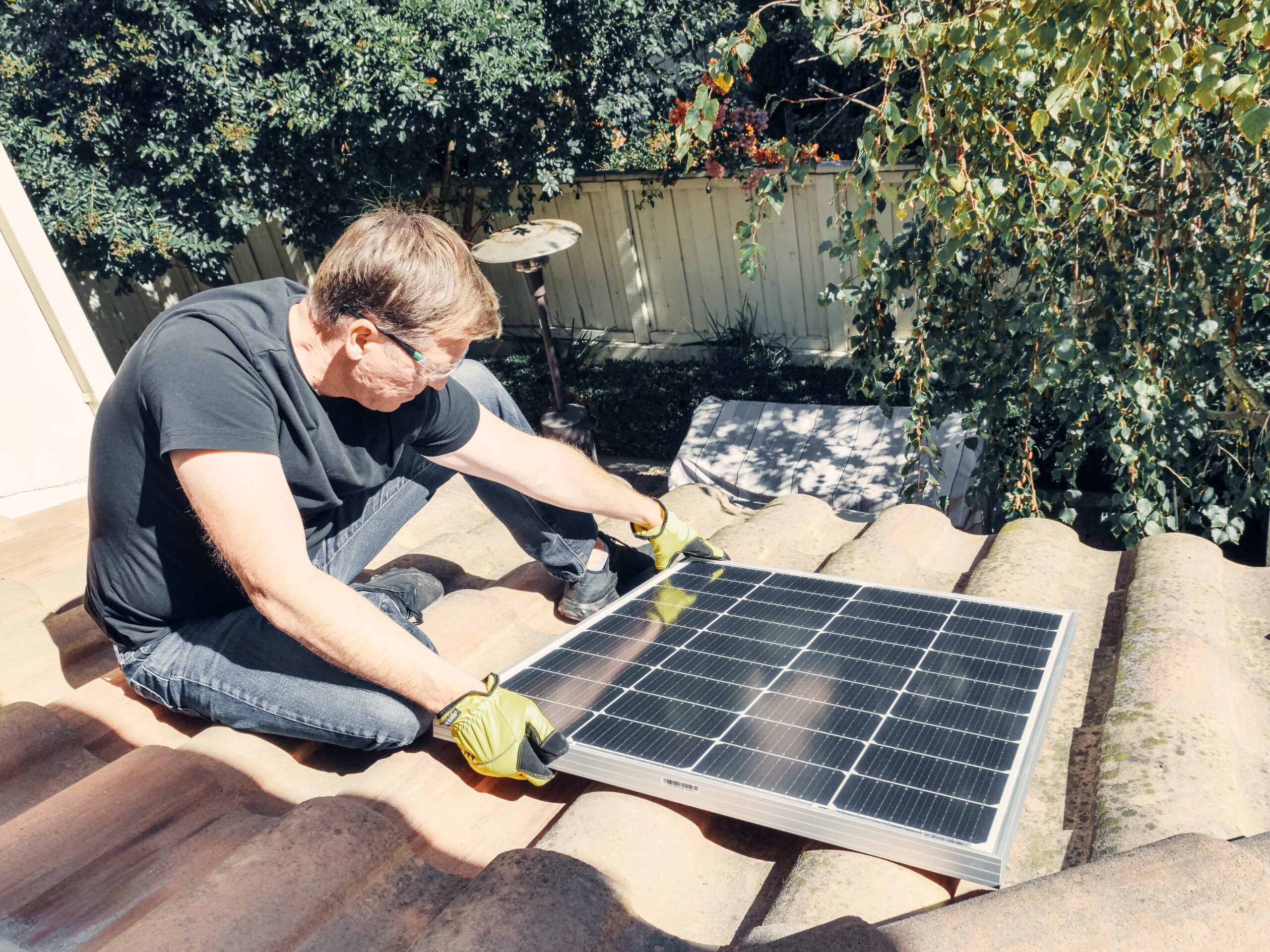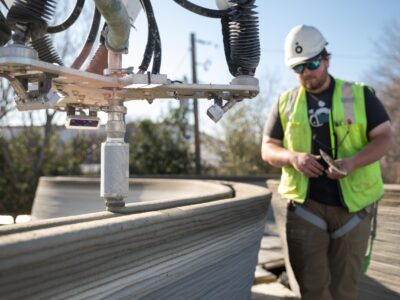(Bloomberg) —
When Lee-Sean Huang and his husband David Colby Reed decided to decarbonize their 120-year-old Providence, Rhode Island, home, they soon discovered it wasn’t even ready for a high-efficiency electric induction stove.
“We had to update the electrical, paying an electrician to run 240 volts for the induction range,” says Huang, who runs a design firm with Reed.
They’re not alone. As many as 48 million homes in the United States may need expensive electrical upgrades to handle the increased power demands of solar panels, heat pumps, and electric car chargers, according to a 2021 paper by Pecan Street, a nonprofit that promotes building electrification and pegs the total cost of such improvements at upwards of $100 billion. For homeowners, installing a new electrical panel can require thousands of dollars — more if a utility needs to run a higher-capacity electric supply wire to the house. Those could be considerable obstacles to reducing greenhouse gas emissions.
But a growing number of technologies are available to help homeowners sidestep such hurdles, as are a new round of incentives. The Inflation Reduction Act signed into law by President Joe Biden is likely to supercharge home electrification by providing generous rebates and tax credits to install heat pumps, solar panels and other appliances. The legislation also offers a $4,000 rebate to help pay for electrical system improvements.
Get a smart electrical panel
More than half of single-family homes in the US were built before 1980, a time when people used far fewer electric devices and a 100-amp electrical panel was enough to handle the load. Today, homes are stuffed with big-screen televisions, computers and other electronic gadgets. Throw in high-voltage electric car chargers, solar panels and heat pumps, and there aren’t enough circuits or electrical capacity in a 100-amp panel to handle the higher demand. That means an upgrade to a 200-amp panel is needed to avoid potential overloads.
A new electrical panel can cost $2,000 or more, depending on the complexity of the installation. Sometimes, your utility will need to run a new electric supply wire to the house to handle the greater capacity, which can add thousands of dollars and take weeks or months to complete. If the supply wire has to be routed underground, costs can exceed $10,000.
An alternative is to install an internet-enabled “smart” electrical panel that manages all the circuits in a home, balancing the load generated by solar panels, battery storage systems, electric car chargers and heat pumps.
An analysis by Rewiring America, a nonprofit that advocates for community electrification, found that a smart panel can regulate a home’s energy use to avoid spikes in demand that would otherwise require a larger conventional electrical panel. For instance, you might overload a 100-amp panel if you come home and plug in your electric car, turn on the heat pump and do a load of laundry. A smart panel could automatically delay charging the car until the end of the spin cycle to avoid that.
The study was based on data collected by smart panels made by Span.IO Inc. At $4,500 before installation costs, the San Francisco-based startup’s Span panel is pricey. However, it and other smart panels can spare homeowners from paying for costly supply wire upgrades. It also ensures enough capacity for adding more appliances in the future, like another EV charger for a second battery-powered car.
Span’s smartphone app lets homeowners monitor and control every circuit and appliance in the house, which can come in handy when electricity demand spikes and they want to shut down power-hungry appliances or route power from a home battery storage system. Information on energy consumption can also indicate if a device is malfunctioning.
Span doesn’t disclose sales figures, but Founder and Chief Executive Officer Arch Rao says thousands of its sleek white smart panels have been sold in the US since the company launched in 2018. “Our long-term goal is to enable electrification at scale, starting with homes because we think that’s the best opportunity for us to deliver decarbonization,” says Rao, a former product chief at Tesla Energy.
Span isn’t the only smart panel on the market, but it is one of few for now. Schneider Electric SE makes a $2,999 version called the Square D Energy Center that is currently only sold in California, according to the company’s website.
Look for low-voltage appliances
“Smart panels aren’t the only answer to this problem,” says Sam Calisch, head of special projects for Rewiring America and a co-author of the smart panel study. Another approach is to replace fossil fuel appliances with low-voltage electric ones that won’t overload your existing panel.
Switching out a natural gas water heater for a heat pump version usually requires an upgrade to a 240-volt circuit, for example. But in July, Rheem Manufacturing Co. unveiled 120-volt versions of its ProTerra heat pump water heater that can be plugged into a standard circuit. The ProTerra is available nationwide, and other 120-volt heat pump water heaters are expected to come to market soon.
That will be a game-changer, according to Calisch, making it far easier to replace a natural gas water heater with a low-carbon heat pump. No one wants to go without hot water waiting for an electrical upgrade, so when a natural gas water heater fails unexpectedly, a homeowner is likely to buy another one and lock in 15 to 20 more years of fossil fuel emissions. A 120-volt heat pump water heater, on the other hand, can be installed immediately.
The Inflation Reduction Act offers a rebate up to $1,750 for heat pump water heaters; that would cover much of the cost of the 120-volt ProTerra, which has a retail price of $1,904 to $3,156, depending on the water tank capacity. (The rebate is available for households earning up to 150% of the median income in their area.)
Bypass the electric panel entirely
One other solution to an aging electrical panel is to avoid using it wherever possible. To simplify the process of a connecting a home’s solar system, for example, ConnectDER makes what it calls a “solar collar,” a device that allows a rooftop solar setup to be plugged directly into the utility meter. That saves on installation costs and doesn’t require an electrical panel upgrade.
“You have such a high amount of overlap between underserved low- and middle-income populations and 100-amp panels for smaller homes,” says Whit Fulton, ConnectDER’s founder and chief executive officer. “We can offer them faster and cheaper electrification without having to buy a new panel.”
Last month, the Falls Church, Virginia-based company announced that it is developing an attachment that would allow 240-volt electric car chargers made by Siemens AG to be plugged directly into the meter. That, too, frees up space on a home’s existing electrical panel for use by other climate-friendly appliances. Fulton says the attachment will temporarily delay charging a vehicle if it detects a home’s electricity demand is exceeding the capacity of the utility supply wire. The company is also working on technology to allow multiple electric appliances to share a meter adapter.
John DeBoer, head of eMobility for Siemens North America, said he expects the adapter to go on sale sometime in 2023, though availability will depend on approval from local utilities. The price has not been set, but he says it will be substantially lower than a panel upgrade.
“We’re really moving from early adopters to mass adoption of electric vehicles and we want to minimize the cost, time and complexity associated with that change,” DeBoer says.
Start preparing now
Future-proofing your home is no minor task: You’ll need to think about what devices you want to get — induction stove, heat pump, electric car, solar panels — and then gauge the likely impact on your power needs to figure out the extent of an electrical upgrade. Finding “an electrician who is willing to go the extra mile and think through these things is a challenge” as well, notes Calisch. It’s worth looking into whether your utility or state rebate program lists recommended contractors who specialize in home electrification.
But the best advice on offer is to be proactive, and think long-term. Lee-Sean Huang and David Colby Reed knew when they bought their two-family home that they wanted to electrify it beyond installing an induction stove: They’re planning to add solar panels next, and eventually an electric car charger. That makes upgrading the electric panel now an easy decision.
“It just seems to make sense to do the future-oriented investments in the house,” says Reed, “so we’re ready.”
((Updates to reflect availability of 120-volt ProTerra.))
To contact the author of this story:
Todd Woody in San Francisco at twoody4@bloomberg.net
© 2022 Bloomberg L.P.





